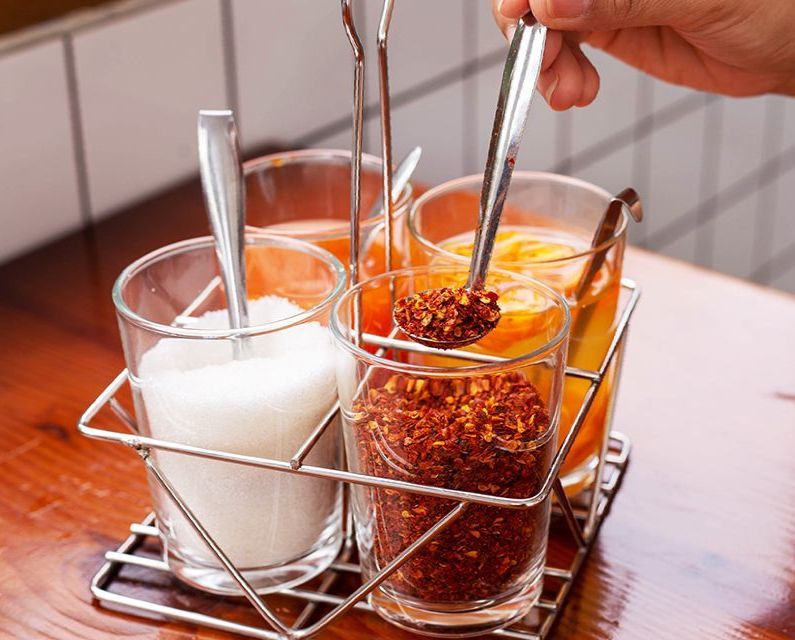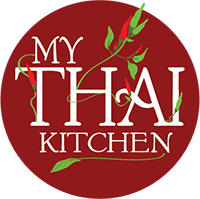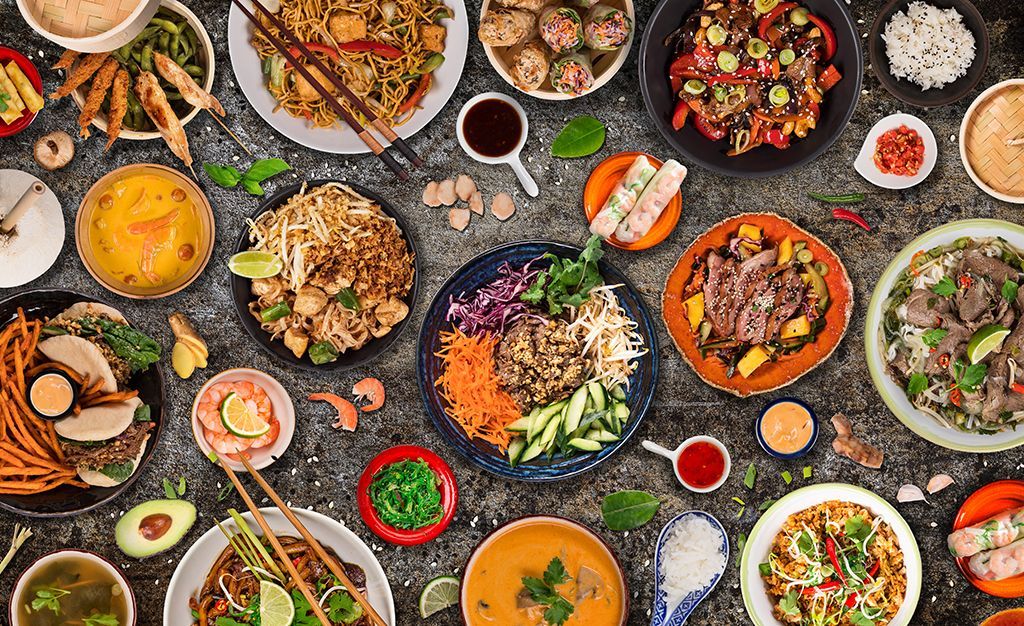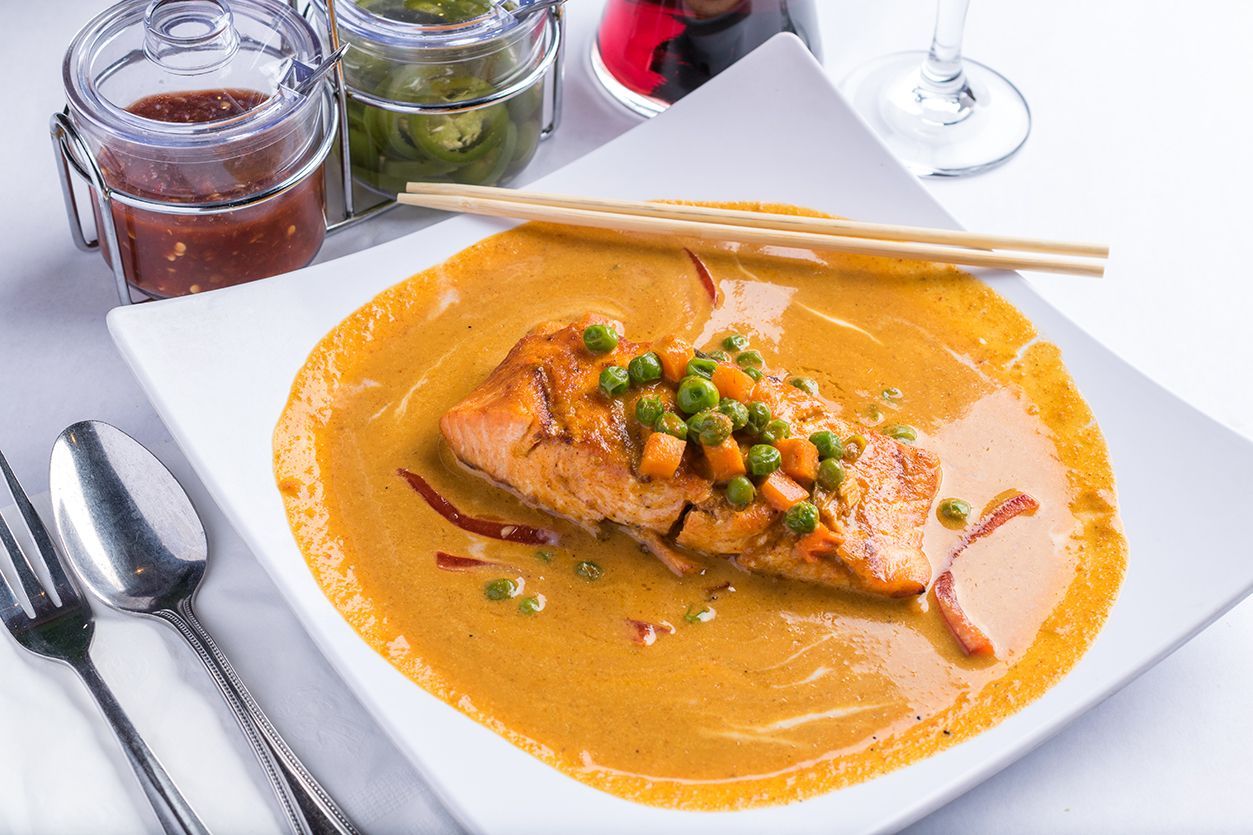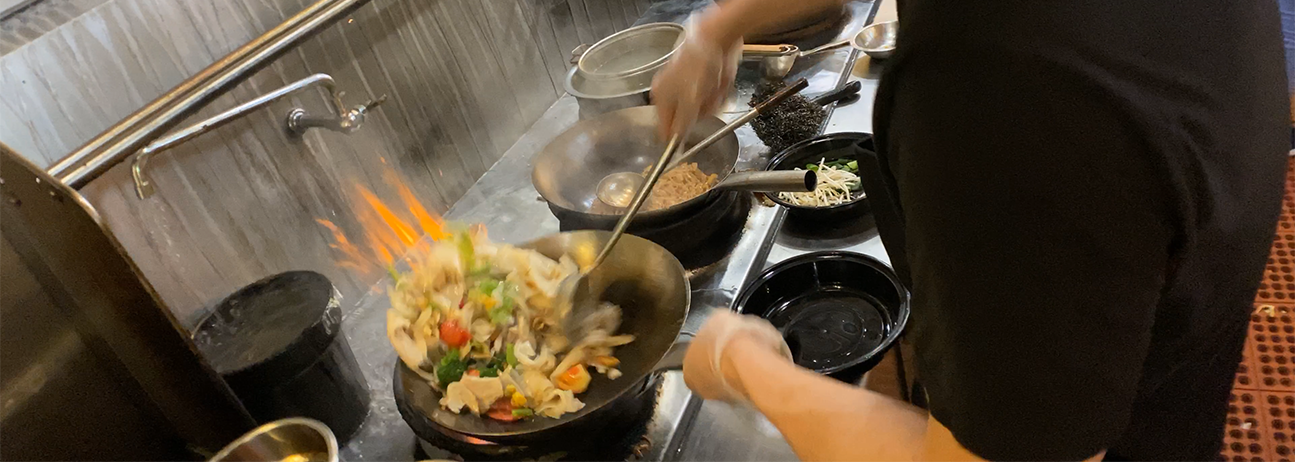Let’s Talk About the Spicy Level Scale — Why “Hot” Means Something Different to Everyone
Let’s Talk About the Spicy Level Scale
Some Q&A about spiciness we often hear at My Thai Kitchen (MTK)
“I’m worried Thai food is too spicy for me. Should I be?”
That’s a very common — and very good — question! Many people assume Thai cuisine is always fiery, loaded with hot peppers, chili oil, or even some of the world’s hottest peppers. But that’s not true at all.
For a Thai food restauranteur, it can be challenging to help people understand that not every Thai dish is spicy. In fact, at My Thai Kitchen (MTK), many of our appetizers, noodle dishes, and rice plates are mild and full of flavor without intense heat. Like so many other Asian cuisines, Thai food is incredibly diverse, and we’re always working to show guests how approachable and balanced it can be.
Our mission at MTK has always been to introduce guests to Thailand’s fabled culinary traditions and the beauty of its flavors. We want everyone to discover that there’s so much more to Thai cuisine than spice alone, and that they’ll probably enjoy it once they give it a try.
We use a wide range of pepper varieties and fresh herbs to build layers of taste, from light and aromatic to bold and spicy. Many of our appetizers come with homemade peanut sauce or our sweet and lightly spicy sauce on the side, so you can control your own heat level and enjoy the balance of flavors your way.
Of course, some dishes like our curries (ex. green currry) are inherently spicy—that’s part of their authentic character—but even then, the spiciness can be adjusted to your preference. So if you’re ever concerned or have order it please simply ask your server for guidance.
*** It can be returned to the kitchen and coconut milk can be added to tone it down!
The perception of a spicy level is deeply personal, and everyone’s taste buds react differently. What locals enjoy as medium heat might taste extremely spicy to someone new to Thai dishes. So don’t worry—spiciness in Thai food is adjustable, and we’ll always help you find the level that makes your meal perfect.
It’s understandable that Western food lovers might be hesitant to try Thai cuisine — a cheeseburger or pizza may seem like the “safer” choice. But once you realize that Thai food’s spice level can be tailored just for you, you’ll see how it's an amazing cuisine waiting for you to explore.
The MTK Spicy Level Scale
We have a spicy scale from 0 to 4, but that scale is not an exact science. With that said, let’s explore why this is so.
When customers are ordering at MTK, they can choose their preferred degree of heat — from zero (non-spicy) to level 4 (Thai spicy). It sounds simple, but this spicy scale can sometimes be a potential failure, and here’s why.
Out there in the world, there really is no definitive benchmark for spiciness. The heat level someone perceives is completely subjective. The real definition of spice intensity lives within the individual who is tasting the food at that moment. One diner might rate a dish a “1” on their personal pepper heat scale, while another might taste the same bite and swear it’s a “4.” There’s simply no standard way to define a spicy scale, because it varies from palate to palate.
Even when scientific methods are used to measure heat — such as taste testing, or the Scoville Heat Scale that measures pungency units (SHU) — they still rely on perception. And that’s before you factor in all the real-world variables:
- The type of pepper or variety being used
- The cultivation conditions like soil, ripeness, and sunlight
- The preparation method — whether it’s fresh, dried, or cooked in chili oil
All of these details make it extremely challenging to standardize heat levels across dishes.
Spicy Level Scale: How Are Peppers Ranked?
From a chef’s perspective, this is a daily challenge. When our kitchen prepares a meal and you request a specific spice level, our chefs use experience and judgment. They add measured spoonfuls of chili peppers, but that process is never precise. That’s because not all chilis are identical in their capsaicin content — the compound that gives chili its heat. Factors such as growing conditions, harvest timing, and even the specific fruit picked can cause heat levels to vary. Some batches may be mild, others scorching, depending on the exact concentration and how the pepper was grown or stored. Waiting longer before harvesting can help obtain higher heat levels in some peppers.
So while our chefs always strive to meet your chosen spicy level, achieving the identical heat every time is almost impossible. It’s not for lack of effort — it’s simply the reality of working with natural ingredients. The heat can even vary within the same fruit from the same plant.
We sometimes hear comments like:
“Last time my Level 2 was perfect, but today it feels like a 4!” “I ordered a 4 and this time it tastes more like a 2 — what happened?”
That’s completely understandable. The truth is, pepper heat and spiciness are living, changing qualities — affected by nature, preparation, and personal taste. The colorful fruit of hot peppers can be both visually appealing and unpredictable in heat.
That’s why we encourage guests to start lower and then customize their heat at the table. Ask your server for our condiment tray — you’ll find options like chili flakes, crushed pepper, hot sauce, or even fresh chili oil. Add small amounts to your meal, test a bite, and build up to your perfect balance.
In the end, there’s no “correct” number — just the heat level that makes you happiest.
A Deep Dive on the Science of the Hot Pepper Heat Scale
Spicy foods are measured in Scoville Heat Units (SHU) — a way of ranking pepper heat based on capsaicin concentration. Here are some examples:
| Pepper Variety | Heat (SHU) | Category |
|---|---|---|
| Bell Pepper | 0 | Non-spicy |
| Jalapeño | 2,500 - 8,000 | Mild |
| Thai Chili | 2,500 - 8,000 | Hot |
| Ghost Pepper | 50,000 - 100,000+ | Extremely Hot |
| Carolina Reaper | 1,500,000–2,000,000+ | World’s Hottest Pepper |
These numbers come from taste tests where samples are diluted in sugar water until tasters can no longer detect heat. Even that process depends on each person’s palate and tongue sensitivity, showing just how personal the spicy experience truly is. The hottest peppers on earth, like the Carolina Reaper and Ghost Pepper, have earned a global reputation for their extreme heat. Check out more about the hottest peppers in the world.
Applications of Pepper Ranking
The Scoville scale isn’t just a curiosity for spice lovers—it’s a practical tool that shapes the way we cook, create, and even shop for hot peppers and hot sauces. By assigning Scoville heat units (SHU) to different pepper varieties, chefs and home cooks can confidently select the right level of heat for any dish. For example, if you’re looking to add a gentle kick to your salsa, a mild Anaheim Pepper (500–2,500 SHU) might be your go-to. But if you’re chasing the thrill of the extremely hot, the Ghost Pepper—clocking in at over 1,000,000 SHU—offers a fiery experience that’s not for the faint of heart.
In the world of hot sauce, the Scoville scale is essential for both producers and consumers. Hot sauce manufacturers rely on precise measurements of pepper heat to craft sauces that range from mild and approachable to the scorching extremes of the Carolina Reaper, currently recognized as the world’s hottest pepper with an SHU rating soaring past 1,641,300. By clearly labeling their products with Scoville units, brands help spice enthusiasts find the perfect match for their palate, whether they crave a subtle warmth or a sauce that brings the heat.
Beyond the kitchen, the Scoville scale has found its place in scientific research. The original Scoville organoleptic test, developed by Wilbur Scoville, involved taste testers and sugar water dilutions to determine a pepper’s heat level. Today, scientists often use High Performance Liquid Chromatography (HPLC) to measure the exact concentration of capsaicin—the chemical compound responsible for a pepper’s pungency. This allows for more accurate and consistent results, which are crucial for studying the potential health benefits and culinary uses of chili peppers.
Pepper rankings have also become a powerful marketing tool. Many hot sauces and pepper products proudly display their Scoville rating, inviting adventurous eaters to test their limits and explore the vast range of heat levels available. Whether you’re a seasoned chili aficionado or just starting to experiment with spice, knowing the SHU of your peppers helps you navigate the world of hot, hotter, and hottest with confidence.
From the farm to the lab to your dinner table, the Scoville scale remains the gold standard for measuring and understanding pepper heat. It empowers everyone—from chefs to scientists to home cooks—to determine, compare, and enjoy the incredible diversity of chili peppers and hot sauces found around the world.
So What Is the Answer for a Perfect Heat Level?
For those customers who desire a spicy meal, please consider the following.
We urge you to start with a low level of spice when trying something new. Some customers find that a medium level is the perfect balance of flavor and heat. It’s always easier to add more chili than to take it away — if it’s too spicy, the dish often has to be remade.
When your meal arrives, ask your server for the condiment tray. It includes items like chili flakes, chili oil, and other hot sauces so you can adjust your heat level bite by bite. Try it on a small portion first; if it feels right, build from there until you find your perfect balance.
Is there a number for this? We don’t know — but we hope it’s the level that makes you happy!
Note: If you order something like a curry and it’s too spicy, please let your server know right away. Our chefs can easily cool it down by adding a touch more coconut milk. It’s quick, and we want you to love every bite.
Final Thoughts 🌶️
Whether you prefer mild, medium, or Thai-spicy, we want your dining experience to be fun, flavorful, and comfortable. Thai cuisine is about balance, not just heat.
We hope this helps both new and returning guests better understand the spicy scale, appreciate the natural variation in pepper heat, and feel confident exploring our menu. So next time you visit My Thai Kitchen, grab your chopsticks, take a sip of Thai iced tea, and find your perfect level of spice and happiness.
Thank you for sharing your spice journey with us!
